Common Lawn Pests in West Michigan
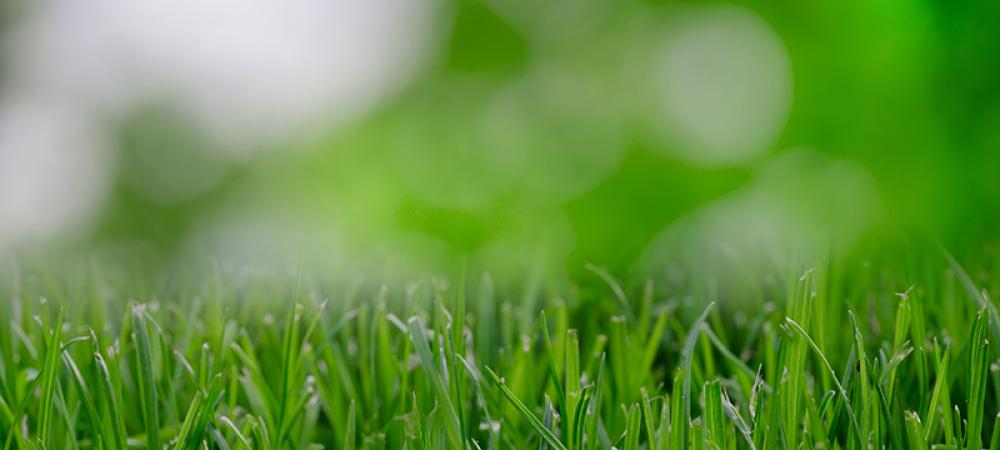
Keeping a lawn healthy in West Michigan means more than just mowing and watering—it also means staying alert for pest activity. Insects and animals can quickly turn a lush yard into a patchy, damaged mess if left unchecked. Whether it’s grubs eating your roots or moles tunneling just beneath the surface, knowing what to look for is key to early intervention.
Below, we’ve broken down the most common lawn pests in the region, the signs they leave behind, and how to tell if your lawn is at risk.
The Most Common Insects in West Michigan
Several types of insects can damage West Michigan lawns, often targeting grass roots, stems, or blades. Their activity tends to peak during the warmer months, and the damage can appear quickly if conditions are right.
Lawn Grubs
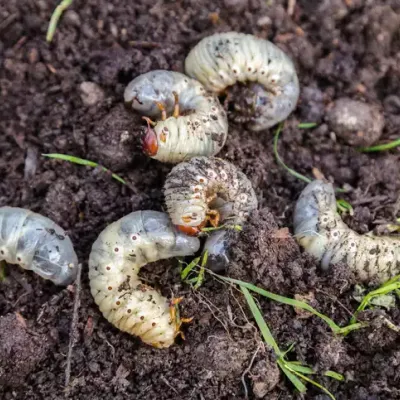
Among the most common and destructive lawn pests, grubs can quickly ruin turf from below the surface.
- White, C-shaped beetle larvae (e.g., Japanese beetles, European chafers).
- Feed on grass roots, causing thinning, browning, and turf that lifts easily.
- Most active in late summer through early fall.
- Often attract digging animals like skunks and raccoons.
Chinch Bugs
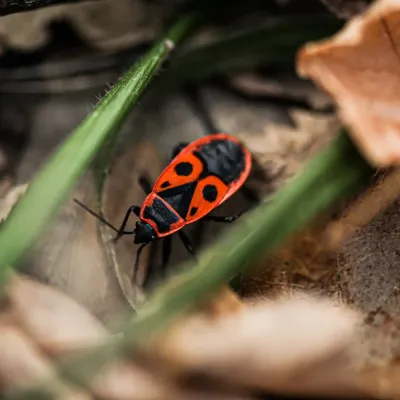
These tiny insects may be hard to see, but their damage becomes highly visible during dry, sunny conditions.
- Small insects that suck moisture from grass and inject toxins.
- Cause yellowing or bronzing in sunny parts of the lawn.
- Damage worsens during dry, hot weather.
Sod Webworms
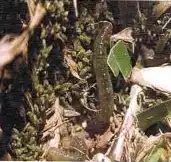
Sod webworms are lawn moth larvae that graze on grass blades, especially during warm evenings.
- Larvae of lawn moths that chew grass blades.
- Create small brown patches and thin, grazed areas.
- Most active from late spring through summer evenings.
Billbugs
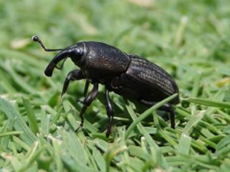
These snouted weevils damage lawns during both their adult and larval stages, often creating dead patches that are mistaken for drought.
- Snouted weevils that damage grass during both larval and adult stages.
- Brown patches appear in spring or summer.
- Damaged grass breaks off easily at the crown.
European Crane Flies
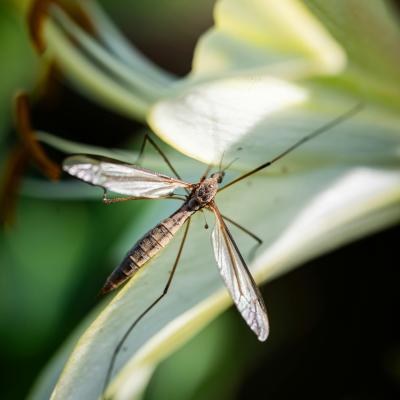
Crane fly larvae may resemble grubs but feed on grass blades instead of roots, leading to circular areas of damage.
- Their larvae feed on turf in circular patches.
- Affected grass may turn yellow, orange, or brown.
- Activity peaks in spring and fall.
Armyworms
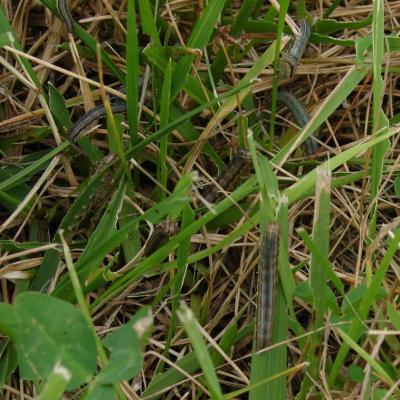
When armyworms appear, they can quickly devastate large sections of lawn due to their group feeding behavior.
- Fast-moving caterpillars that feed in groups.
- Can strip large areas of grass overnight.
- Often seen in late summer after warm, wet conditions.
Signs of Lawn Pest Damage
Not all brown patches or dying turf are caused by pests, but certain clues can point you in the right direction. If you're unsure whether insects or animals are behind the damage, look for these patterns in your lawn.
- Irregular brown or yellow patches
Pest damage often appears in uneven clusters that don’t improve with watering or fertilizer. - Grass that lifts easily from the soil
Turf that peels up like a carpet often indicates grub activity below the surface. - A soft or spongy feel underfoot
This could be a sign of tunneling by moles, voles, or insects loosening the soil. - Chewed or scalped grass blades
Feeding from sod webworms, armyworms, or billbugs can leave visible bite marks or grazed areas. - Tunnels or surface trails
Voles create shallow runs across the lawn, often seen in early spring after snow melts. - Holes and torn-up patches
Skunks, raccoons, and birds may dig in the turf while hunting for grubs. - Increased animal or bird activity
If you notice wildlife consistently foraging on your lawn, they may be responding to a pest infestation.
Don’t Let Lawn Pests Take Over
A pest infestation can quickly get out of control, especially during peak activity seasons. If you’re seeing any of the signs above, it may be time to schedule a lawn care service. Our lawn care specialists can correctly identify the pest, assess the extent of the damage, and recommend treatments tailored to your property.
Need help diagnosing or treating pest problems in your lawn? Contact us today for a comprehensive lawn evaluation and a customized treatment plan built for West Michigan conditions.
